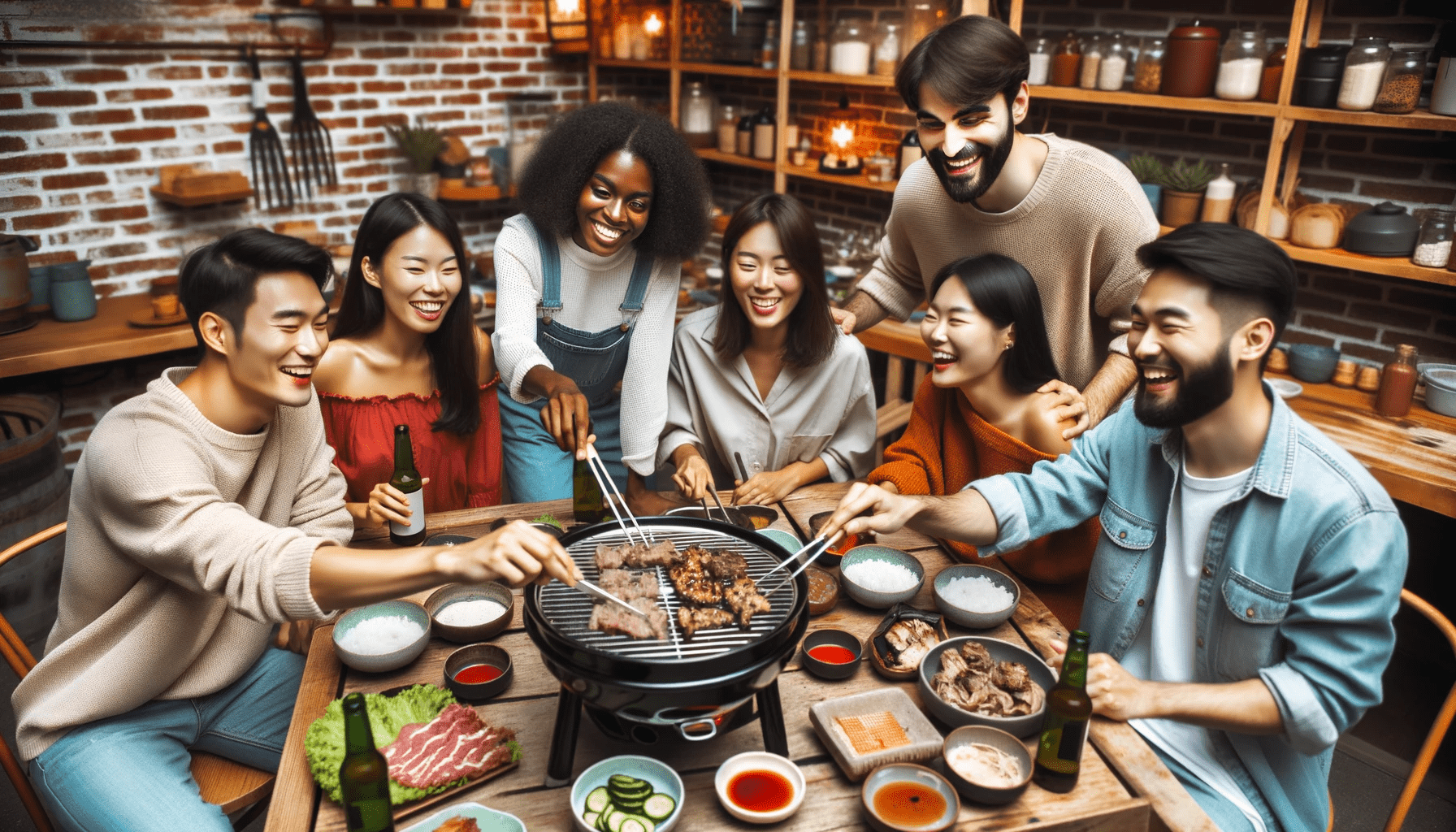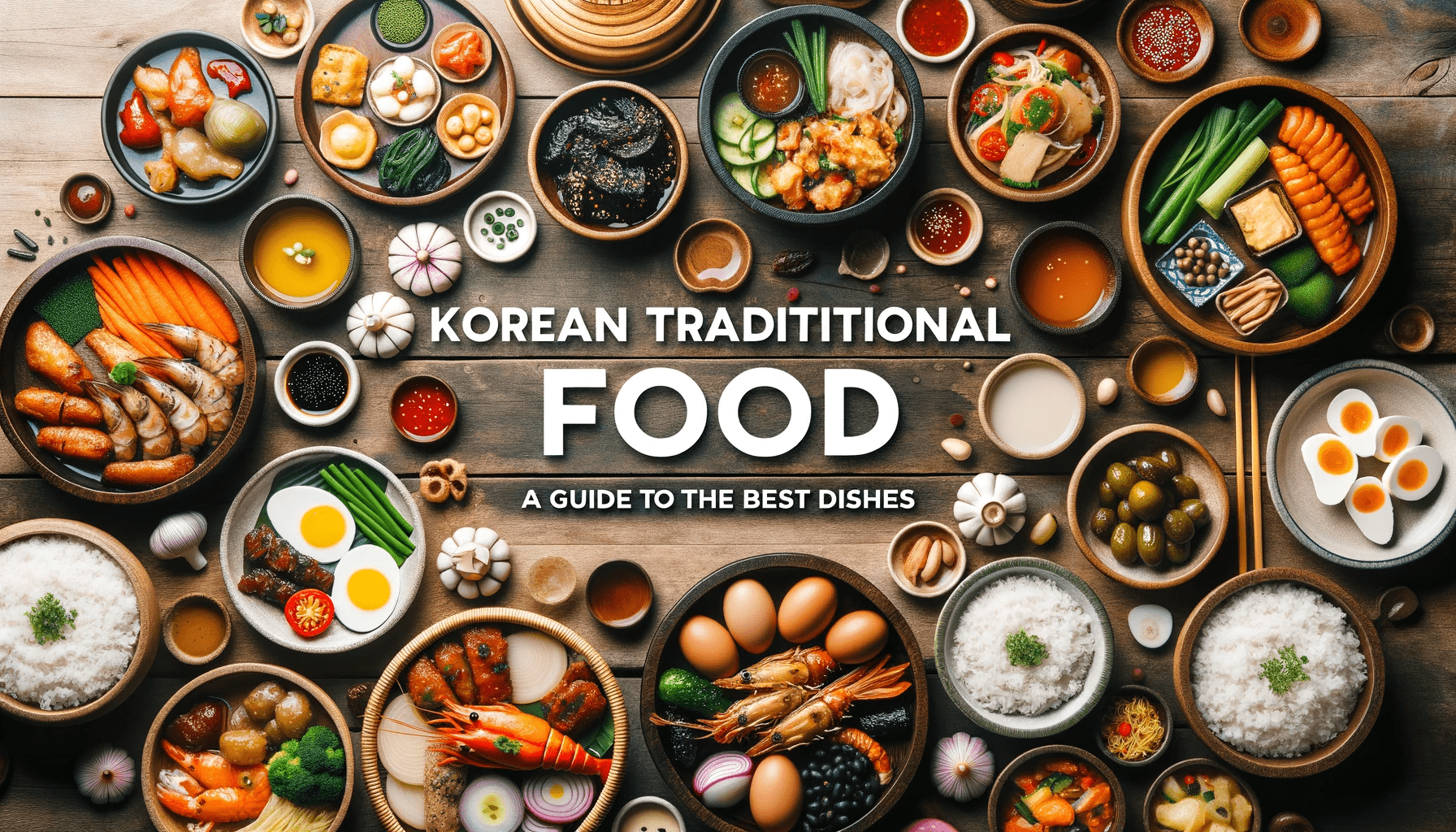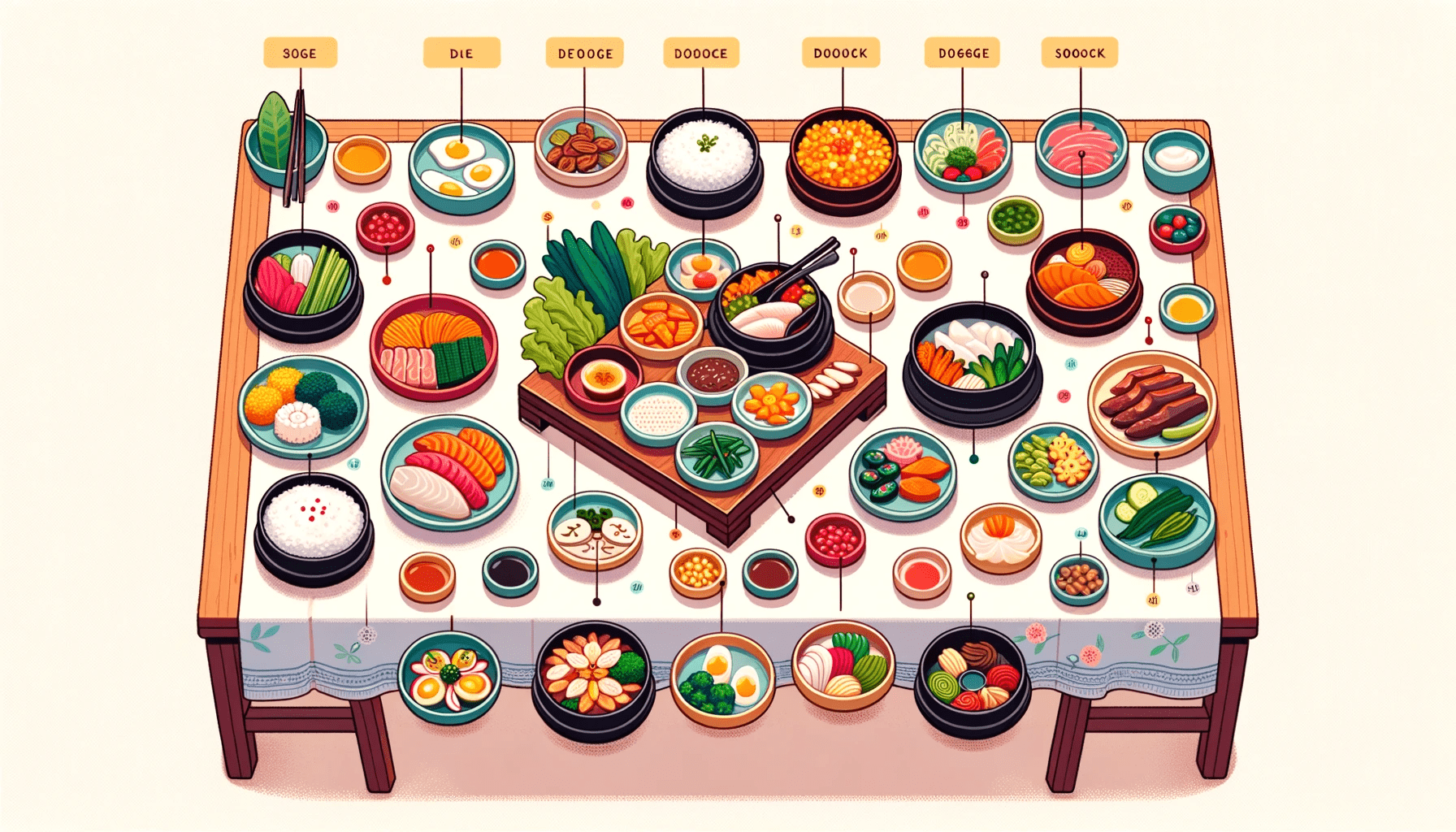Are you ready to dive into the sizzling world of Korean BBQ? Get ready for an adventure that will leave your taste buds tantalized and your stomach satisfied.
Did you know that Korean BBQ has become a popular dining trend, offering an All-You-Can-Eat experience at affordable prices?
In this step-by-step guide, we’ll take you through the types of meat, the grilling process, and the mouthwatering condiments and wraps that make this cuisine truly special.
So grab your appetite and let’s get grilling!
Key Takeaways
- Different types of meat are commonly used in Korean BBQ, including beef ribs, beef tongue, pork crosscut ribs, marinated chicken, and pork belly.
- The grilling process involves starting with unseasoned premium cuts, progressing to thicker pieces, using marinades and pastes, and swapping out the grill.
- Condiments and wraps, such as chili paste and fermented soybean paste, are used to enhance the flavors of the cooked meat, which can be wrapped in lettuce leaves or rice paper.
- Recommended cuts for Korean BBQ include marbled pork neck, thinly sliced beef brisket, unmarinated boneless beef rib meat, marinated beef crosscut ribs, and thinly sliced marinated beef.
Types of Meat
When exploring Korean BBQ, you’ll encounter a variety of meat options to savor. From thicker cuts to thinner cuts, each type offers a unique texture and flavor.
One key aspect to consider is the marbling in beef. Marbling refers to the fat content within the meat, which enhances tenderness and adds richness to the taste.
For those who prefer a more luxurious and melt-in-your-mouth experience, thicker cuts with generous marbling, such as Mokssal (marbled pork neck) or Chadol baegi (thinly sliced beef brisket), are the way to go.
On the other hand, if you prefer a leaner option, you can opt for Galbi Ssal (unmarinated, boneless beef rib meat) or Boolgogi (thinly sliced marinated beef).
Whether you choose thicker or thinner cuts, the marbling in beef will elevate your Korean BBQ experience to new heights.
Grilling Process
Now that you’ve learned about the different types of meat used in Korean BBQ, it’s time to dive into the grilling process.
Get ready to make some choices: thicker cuts or thinner cuts? To marinade or not to marinade? And don’t forget about the different grilling techniques you can try.
Get ready to fire up the grill and create a delicious feast!
Thicker Vs Thinner Cuts
To achieve the best grilling results, consider the thickness of the cuts of meat when cooking Korean BBQ. Thicker cuts and thinner cuts each have their own techniques for grilling, so it’s important to know the difference. Here are three key points to keep in mind:
-
Thicker cuts: These cuts of meat require a longer cooking time to ensure they’re cooked all the way through. The thicker the cut, the more time it will take to grill. This allows the meat to develop a beautiful crust on the outside while remaining tender and juicy on the inside.
-
Thinner cuts: Thinner cuts of meat cook much faster than thicker cuts. They require less time on the grill to reach the desired level of doneness. Be careful not to overcook thin cuts, as they can easily become dry and tough.
-
Cooking techniques: For thicker cuts, it’s recommended to use a lower heat and longer cooking time. This allows the heat to penetrate the meat evenly and ensures a juicy result. Thinner cuts, on the other hand, benefit from higher heat for a shorter period of time. This creates a nice sear on the outside while keeping the inside tender.
Marinade or No Marinade
To achieve the best grilling results for Korean BBQ, it’s important to decide whether to use a marinade or grill the meat without one. Grilling techniques play a significant role in Korean BBQ as they can enhance the flavors and textures of the meat.
The choice of marinade or no marinade depends on personal preference and cultural significance. Some traditional Korean BBQ dishes like Yang-nyeom galbi (marinated beef ribs) and Dweji galbi (marinated or unmarinated pork crosscut ribs) rely on flavorful marinades to tenderize and infuse the meat with delicious flavors.
On the other hand, unmarinated cuts like Chadol baegi (thinly sliced beef brisket) and Galbi Ssal (unmarinated, boneless beef rib meat) allow the natural flavors of the meat to shine through during the grilling process.
Experiment with both options to find your favorite grilling technique and enjoy the mouthwatering experience of Korean BBQ.
Different Grilling Techniques
To achieve the best grilling results for Korean BBQ, you need to understand the different grilling techniques involved in the process. Here are some key points to consider:
-
Thinner vs Thicker Cuts: The thickness of the meat plays a significant role in the grilling process. Thinner cuts like chadol baegi (thinly sliced beef brisket) cook quickly and are perfect for a quick meal. On the other hand, thicker cuts like mokssal (marbled pork neck) require more time to cook and are ideal for a leisurely dining experience.
-
Cultural Significance of Grilling Techniques: Grilling techniques in Korean BBQ have cultural significance. The gradual progression from unseasoned premium cuts to thicker pieces allows you to savor the flavors and textures of the meat. Additionally, embracing the marinade and swapping out the grill contribute to the overall taste and experience of Korean BBQ.
-
Flavorful Results: By understanding and implementing these grilling techniques, you can achieve the perfect balance of tenderness, juiciness, and char on your meat. Each bite will be a burst of flavor, highlighting the unique characteristics of different cuts and marinades.
Mastering these grilling techniques will elevate your Korean BBQ experience, ensuring that every bite is a delight to your taste buds.
Condiments and Wraps
Enhance your Korean BBQ experience with a variety of condiments and wraps. Dipping sauces are an essential part of Korean BBQ, adding a burst of flavor to your grilled meats. Try the classic chili paste, gochujang, which pairs well with pork, or the fermented soybean paste, dwenjang, which enhances the taste of beef. Vegetarian options are also available, such as sesame oil and salt, which can be used to season grilled vegetables.
Once your meat is cooked to perfection, dip it into these flavorful condiments for an explosion of taste. For those looking for a different way to enjoy their BBQ, wrap the meat in a crisp lettuce leaf or a soft rice paper. The combination of the tender meat, the crunchy texture of the wrap, and the tangy condiments creates a delightful and satisfying bite.
Recommended Cuts
Looking for the best cuts of meat to grill at your Korean BBQ feast? Look no further. We’ve got the insider knowledge on the most delicious and marbled options that will have your taste buds singing.
From melt-in-your-mouth pork neck to thinly sliced beef brisket, get ready to savor the flavors of these recommended cuts.
Best Meat for Grilling
When grilling Korean BBQ, start by choosing the best meats for the job. The thickness of the cuts and the grilling techniques used can make a big difference in the flavor and texture of the meat. Here are three recommended cuts that will surely satisfy your cravings:
-
Mokssal aka hangjeong ssal: This marbled pork neck is a melt-in-your-mouth delight. The marbling adds richness and juiciness to the meat, making it perfect for grilling.
-
Chadol baegi: Thinly sliced beef brisket is a popular choice for Korean BBQ. It cooks quickly and has a tender texture that pairs well with the smoky flavors from the grill.
-
Galbi Ssal: If you prefer unmarinated beef, boneless beef rib meat is the way to go. It’s juicy, flavorful, and cooks up beautifully on the grill.
Choose these cuts for an unforgettable Korean BBQ experience.
Marbling in Beef
To continue our discussion on the best meats for grilling in Korean BBQ, let’s delve into the topic of marbling in beef and the recommended cuts to enhance your dining experience.
Marbling refers to the visible fat streaks within the meat, which play a crucial role in flavor and tenderness. The marbling in beef creates a melt-in-your-mouth texture and adds richness to every bite.
When it comes to grilling beef, different cuts require different grilling techniques. For example, thinly sliced beef brisket, such as chadol baegi, is best cooked quickly over high heat to preserve its tenderness.
On the other hand, unmarinated boneless beef rib meat, known as Galbi Ssal, benefits from a longer cooking time over medium heat to develop its full flavor.
Choosing the right cuts and mastering the grilling techniques will ensure a truly satisfying Korean BBQ experience.
Tips and Extras
Save the rice for last and stir-fry it with grill pan scrapings for a delicious and satisfying way to end your Korean BBQ meal. The sticky white rice absorbs all the flavors and remnants from the grill, creating a mouthwatering combination of textures and tastes. As you take your last bites of grilled meat, savor the anticipation of this final dish.
Here are three tips and extras to enhance your Korean BBQ experience:
-
Leave room for serious cocktails: Pair your meal with a refreshing soju cocktail or a traditional Korean rice wine. The sweet and savory flavors of the BBQ will be complemented by these well-crafted drinks.
-
Look for a well-run restaurant that replaces the grill grate often: A clean and well-maintained grill ensures that your meat is cooked to perfection and eliminates any burnt or charred flavors.
-
Explore other meat options like shrimp and octopus: While beef and pork are the stars of Korean BBQ, don’t forget to try some seafood options. Grilling shrimp and octopus adds a unique twist to your meal and expands your culinary horizons.
With these tips and extras, you’ll elevate your Korean BBQ experience to a whole new level of enjoyment.
Banchan (Side Dishes)
Now, let’s talk about the delightful side dishes that accompany your Korean BBQ feast.
Banchan, the free side dishes served at Korean BBQ restaurants, offer a variety of options to enhance your dining experience. From the tangy and spicy kimchi to the flavorful bean sprouts and radish kimchi, these banchan dishes add a burst of flavor and variety to your meal.
And the best part? You can enjoy refills of your favorite banchan for free, ensuring that every bite is a delicious adventure.
Variety of Banchan Options
Korean BBQ restaurants offer a diverse array of banchan dishes to accompany your meal. These side dishes not only add variety and flavor to the BBQ experience but also hold cultural significance in Korean cuisine.
As you sit down at the table, you’ll be greeted with at least four different banchan dishes. The sight of colorful kimchi, spicy fish cake, bean sprouts, radish kimchi, and seaweed salad will surely make your mouth water.
The best part? Refills of your favorite banchan are available for free, allowing you to indulge in the flavors that tantalize your taste buds. With each bite of these delicious side dishes, you’ll experience the perfect balance of salty, spicy, and tangy flavors, enhancing the overall enjoyment of your Korean BBQ feast.
Refills of Favorite Banchan
As you continue your Korean BBQ feast, you’ll be delighted to know that refills of your favorite banchan dishes are available for free. These small, flavorful side dishes add variety and enhance the overall BBQ experience. From the tangy kimchi to the spicy fish cake, there are at least four different banchan dishes typically offered at Korean BBQ restaurants. And the best part is, you can keep asking for refills of your favorites! To help you choose a restaurant that provides the best banchan experience, consider looking for one that replaces the grill grate often. This ensures that the banchan dishes are fresh and constantly replenished. So, indulge in the delicious banchan, try different flavors, and make the most of your Korean BBQ adventure.
| Banchan Dishes | Description | Flavor |
|---|---|---|
| Kimchi | Fermented cabbage | Tangy and spicy |
| Spicy Fish Cake | Fish cake in a spicy sauce | Spicy and chewy |
| Bean Sprouts | Blanched bean sprouts | Crunchy and refreshing |
| Radish Kimchi | Fermented radish | Sour and crunchy |
| Seaweed Salad | Marinated seaweed | Salty and savory |
Meats
When grilling at a Korean BBQ, start by choosing from a wide variety of meats. You’ll be amazed at the options available, from tender marinated beef ribs to flavorful sliced beef tongue.
If you’re a pork lover, go for the marinated or unmarinated pork crosscut ribs, or indulge in the juicy pork belly.
Don’t forget to try the marinated chicken, usually on the sweet side.
As for beef, you can opt for the thinly sliced marinated beef brisket or the unmarinated, boneless beef rib meat. And of course, there’s the classic thinly sliced marinated beef known as bulgogi.
With such a selection, you’ll never run out of delicious choices to grill and enjoy.
Sides
To complement the delicious array of meats available at a Korean BBQ, a variety of sides are offered to enhance the overall dining experience.
Alongside the sizzling meats, you’ll find an assortment of delectable sides that add depth and flavor to every bite. Lettuce wraps are a popular choice, allowing you to encase tender pieces of meat and banchan in crispy, refreshing lettuce leaves. The combination of the smoky meat and the crisp lettuce creates a delightful contrast of textures.
And don’t forget to pair your meal with some flavored soju, a traditional Korean alcoholic beverage. From fruity flavors to classic options like green tea or honey, flavored soju adds a fun and refreshing twist to your Korean BBQ experience.
SpoonTips for KBBQ
To make the most of your Korean BBQ experience, start by following these SpoonTips:
-
Start with non-marinated meats like brisket or pork belly before trying richer marinated meats. This allows you to appreciate the natural flavors of the meat before adding any additional seasoning.
-
Trying different kinds of meat allows you to explore a variety of flavors and textures. From beef brisket to pork belly to spicy chicken, each meat offers a unique taste that will keep your taste buds entertained.
-
Don’t forget to indulge in some soju while enjoying your Korean BBQ. Soju is a traditional Korean alcoholic beverage that pairs perfectly with the grilled meats. It adds a refreshing and slightly sweet taste to enhance your dining experience.
Choosing a Restaurant
Consider exploring different Korean BBQ restaurants in your area to find the perfect place to satisfy your cravings.
When choosing a restaurant, two important factors to consider are the restaurant ambiance and pricing and value.
The ambiance of a Korean BBQ restaurant sets the mood for your dining experience. Look for a restaurant with a warm and inviting atmosphere, where you can relax and enjoy your meal.
As for pricing and value, it’s essential to find a restaurant that offers high-quality meat at a reasonable price. Some restaurants may offer all-you-can-eat options, allowing you to indulge in a variety of meats and side dishes for a fixed price. Others may have a la carte menus, giving you the flexibility to choose specific items.
Ultimately, finding a restaurant with the right ambiance and pricing will enhance your Korean BBQ experience.
Cultural Significance of Korean BBQ
Korean BBQ holds cultural significance as a communal dining experience. It brings people together around a grill, fostering a sense of connection and camaraderie.
Here are three reasons why Korean BBQ is culturally significant:
-
Sharing: Korean BBQ encourages sharing and communal eating. It’s a social experience where everyone participates in cooking and enjoying the food together. This fosters a sense of togetherness and strengthens bonds between family, friends, and even strangers.
-
Tradition: Korean BBQ is deeply rooted in Korean culture and tradition. It has been passed down from generation to generation, preserving the heritage and culinary traditions of Korea. By partaking in Korean BBQ, you’re immersing yourself in a rich cultural experience.
-
Respect for Food: Korean BBQ reflects the Korean philosophy of respecting food. From the careful selection of high-quality ingredients to the mindful cooking process, Korean BBQ showcases the appreciation and reverence for food. It reminds us to savor every bite and not take food for granted.
When choosing a restaurant for Korean BBQ, look for a place that embraces these cultural values, offers a welcoming atmosphere, and maintains the authenticity of the dining experience.
Frequently Asked Questions
How Do I Choose a Restaurant for Korean Bbq?
When choosing a restaurant for Korean BBQ, consider the variety of Korean cuisine options they offer. Look for well-run establishments that replace grill grates often. Explore different meat choices and enjoy the feast!
What Is the Cultural Significance of Korean Bbq?
Korean BBQ holds cultural traditions and fosters social bonding. It brings people together around a grill, sharing delicious meats and vibrant flavors. The sizzling sound, the aroma, and the communal experience create a memorable and meaningful dining experience.
Are There Any Vegetarian or Vegan Options Available at Korean BBQ Restaurants?
At Korean BBQ restaurants, you’ll find vegetarian options like tofu and vegetables, and some places even offer vegan options like soy-based meat substitutes. These dishes provide tasty alternatives for those following a plant-based diet.
Can I Bring My Own Alcohol to a Korean BBQ Restaurant?
Yes, you can bring your own alcohol to Korean BBQ restaurants. It’s a great way to customize your dining experience and save money. Just make sure to check the restaurant’s policy beforehand.
Is There a Dress Code for Korean BBQ Restaurants?
There is no strict dress code for Korean BBQ restaurants, but it’s best to dress casually and comfortably. As for reservations, it’s recommended to check the restaurant’s policy and make a reservation in advance to secure your spot.
Conclusion
So there you have it, a tantalizing journey through the world of Korean BBQ. From the sizzling meats to the mouthwatering condiments and wraps, this culinary adventure is sure to leave you craving for more.
Whether you’re a meat lover or a fan of flavorful side dishes, Korean BBQ offers something for everyone. So why wait? Grab your friends, head to a local restaurant, and indulge in this delicious feast.
Just be prepared to be blown away by the explosion of flavors and the cultural significance behind this beloved cuisine.





0 Comments